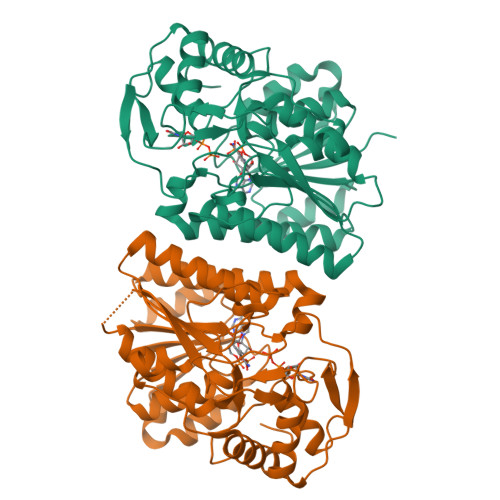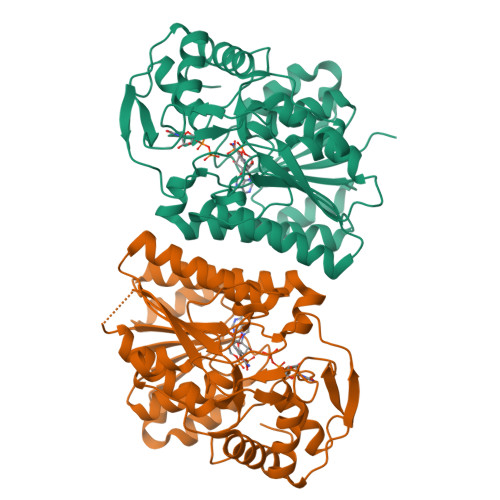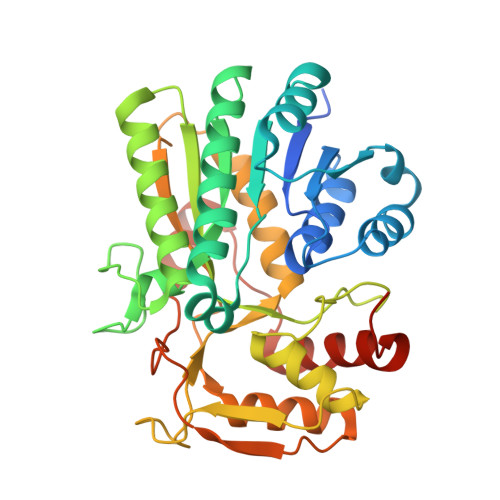Cytosolic UDP-L-arabinose synthesis by bifunctional UDP-glucose 4-epimerases in Arabidopsis.
Umezawa, A., Matsumoto, M., Handa, H., Nakazawa, K., Miyagawa, M., Seifert, G.J., Takahashi, D., Fushinobu, S., Kotake, T.(2024) Plant J 119: 508-524
- PubMed: 38678521
- DOI: https://doi.org/10.1111/tpj.16779
- Primary Citation of Related Structures:
8WOP, 8WOV, 8WOW - PubMed Abstract:
L-Arabinose (L-Ara) is a plant-specific sugar found in cell wall polysaccharides, proteoglycans, glycoproteins, and small glycoconjugates, which play physiologically important roles in cell proliferation and other essential cellular processes. L-Ara is synthesized as UDP-L-arabinose (UDP-L-Ara) from UDP-xylose (UDP-Xyl) by UDP-Xyl 4-epimerases (UXEs), a type of de novo synthesis of L-Ara unique to plants. In Arabidopsis, the Golgi-localized UXE AtMUR4 is the main contributor to UDP-L-Ara synthesis. However, cytosolic bifunctional UDP-glucose 4-epimerases (UGEs) with UXE activity, AtUGE1, and AtUGE3 also catalyze this reaction. For the present study, we first examined the physiological importance of bifunctional UGEs in Arabidopsis. The uge1 and uge3 mutants enhanced the dwarf phenotype of mur4 and further reduced the L-Ara content in cell walls, suggesting that bifunctional UGEs contribute to UDP-L-Ara synthesis. Through the introduction of point mutations exchanging corresponding amino acid residues between AtUGE1 with high UXE activity and AtUGE2 with low UXE activity, two mutations that increase relative UXE activity of AtUGE2 were identified. The crystal structures of AtUGE2 in complex forms with NAD + and NAD + /UDP revealed that the UDP-binding domain of AtUGE2 has a more closed conformation and smaller sugar-binding site than bacterial and mammalian UGEs, suggesting that plant UGEs have the appropriate size and shape for binding UDP-Xyl and UDP-L-Ara to exhibit UXE activity. The presented results suggest that the capacity for cytosolic synthesis of UDP-L-Ara was acquired by the small sugar-binding site and several mutations of UGEs, enabling diversified utilization of L-Ara in seed plants.
Organizational Affiliation:
Division of Life Science, Graduate School of Science and Engineering, Saitama University, 255 Shimo-okubo, Sakura-ku, Saitama, 338-8570, Japan.




















